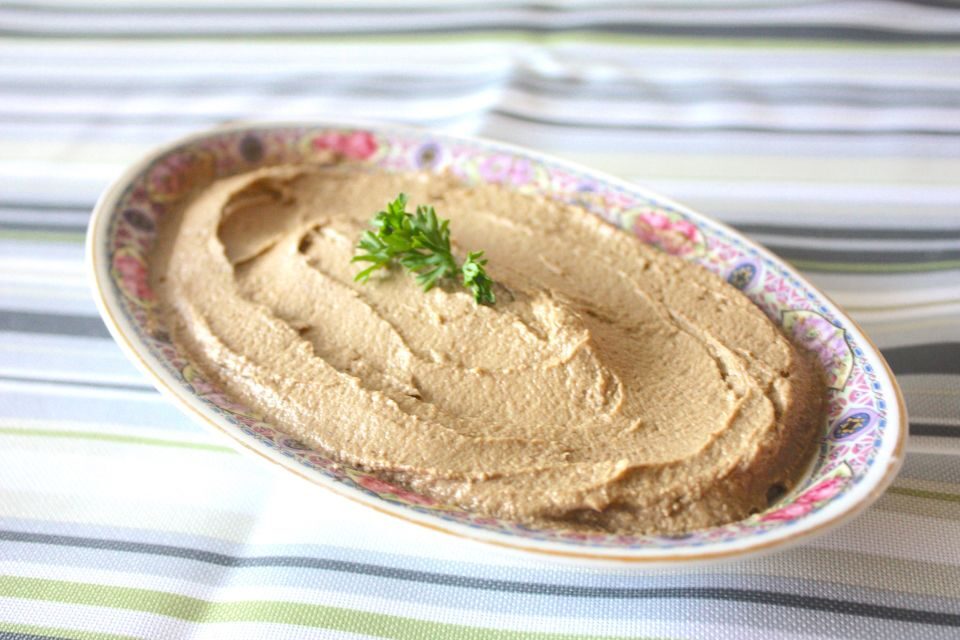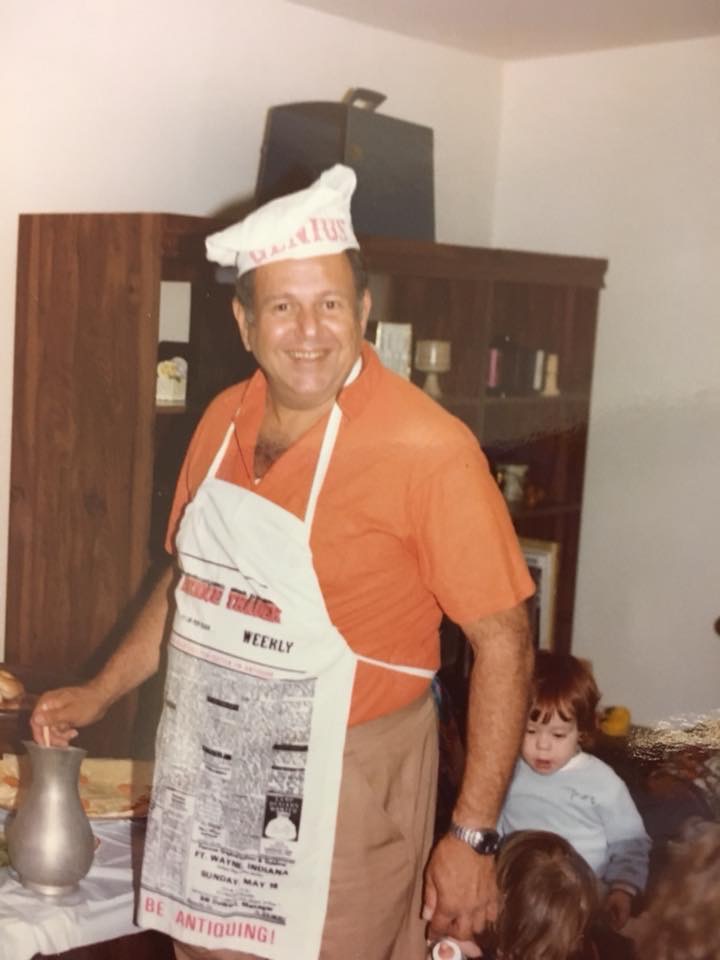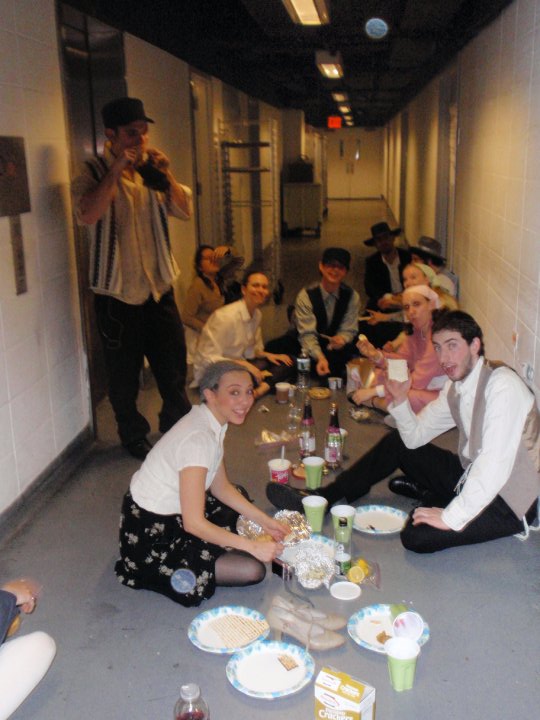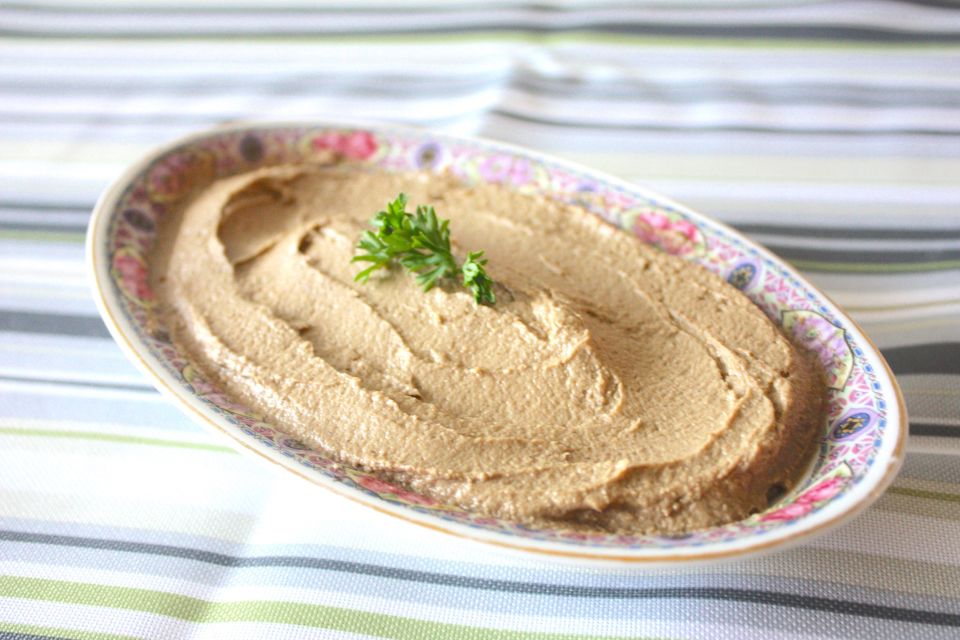At long last, the conclusion:
That Thursday afternoon, we had a class with another kabbalist, with the intent of discussing Shabbat. What I remember from this class, however, was the idea that the whole world was connected, and how everyone’s actions can impact another. While I didn’t want to rile the group up by being the stereotypical vegan, I asked our instructor Alon afterwards what kabbalist thinking had to say about eating animals, if they indeed prescribe to the idea that everything in the world–including everything in nature–is interconnected. His answer was that this perspective didn’t honor human life alone, but that animal life was also something to be respected, and that there were many kabbalists who believe that as we move closer to the coming of mashiach (messiah) more and more of the world will go vegetarian. I continued this discussion with Nina, who brought up the idea that even the famous Rav’ Kook (first head Rabbi of British Mandate Palestine) had said at times that the diet proscribed to Adam and Eve in the Torah was a vegan diet, based on scavenging nuts, seeds, and fruits from Eden. While I never expressly felt that I needed Judaism to validate my dietary choices, there have been people who have insisted to me that I couldn’t possibly be fulfilling Shabbat mitzvot adequately because they involved the consumption of fish and meat. Finding answers to these questions, which were very much pertinent to my own life as a Jew was validating, and definitely strengthened my beliefs, both in terms of Judaism, and in terms of veganism.
Continuing on within the weekly Jewish cycle, Thursday night was filled with preparations for Shabbat. Once again, we had to prepare the common room to accommodate 40+ people for a meal, while the rest of us set about preparing the food. We set about making two vats of soup, one vegetarian, and one a traditional chicken based broth with matzoh balls, salads, roasted chicken, roasted potatoes and sweet potatoes, as well as a vegetable stir fry. While our equipment was far from state of the art, through an intense amount of teamwork, we made quick work of the kilos of potatoes that needed peeling and chopping, and by the time we headed to bed that night, we were well on our way to an easy and restful Shabbat.
Friday morning saw another local hike, this one ending at a natural pool with a waterfall, but given the condition of my ankle on the last one, I sadly elected to stay behind. To my delight, another of the participants also stayed behind (unfortunately due to the severity of his allergies), and instead the two of us spent the day exploring Tzfat, and visiting an incredible local winery.
We brought in Shabbat first by lighting candles, while swaying to the sound of a nigun (a wordless melody), followed by a trip up to the balcony to reflect on the highlight of our week. We stepped out in into the fading sun, and began to sing (and dance) to several songs traditionally sung during kabbalat shabbat, or the service during which we welcome in the Shabbat spirit (and famously written in Tzfat many centuries ago). After this first celebration of song, we were encouraged to go synagogue hopping throughout the city for maariv, the evening service. In a moment of hesitation I took to sing one of my favorites, “Yedid Nefesh” (soul mate), I sort of missed the train (had I tried I could have made it), and instead sat on the balcony with another straggler, quietly singing a few of my favorite Shabbat melodies, and watching the stars begin to burn into view. Our meal was conducted with much song and revelry, so much so that Shlomo somehow broke a chair, and I regularly feared that a table was in danger of being broken in half given the exuberance of the banging that accompanied the songs. It was after dinner though that the real Shabbat magic began. We once again lowered the tables so that we were close to the ground and spread the mats around on the floor. Cups of wine were passed around, and so began the giving of l’chaims (literally, ‘to life’ but here meaning toasts). Many of us went around, toasting each other or toasting experience, until Shlomo stopped us, and asked us to take on a new task. We took the time to go around the large circle, and pay one compliment to the person sitting to our right, and then one to ourselves. The room filled with emotion and sentiment as we began telling each person, just what made them special, and then dug deep to share in honest words the things that we thought made ourselves special. It was an important reminder to verbalize to our friends and loved ones just what makes them so amazing, but also, just how powerful an effect compliments can have on strangers. Being told by someone you may have just met that night (as we were joined by a number of people for Shabbat who hadn’t been there the rest of the week), that their first impression is that you’re a warm and friendly person, or that you’re awesome because you’re vegan was incredibly moving. But as Shlomo said, we weren’t even at the first level.
For those of us who chose to stay up (as it was long past midnight), we, along with Shlomo, Rachel, and Nina (Tifferet had already fallen asleep), went around the circle, each taking a turn singing a song, entirely alone, in front of the rest of the group. What I guess is less of a secret than I sometimes make it out to be, is that I am a classically trained singer. In fact, my vocal training began at the tender age of 14, which means I’ve officially had more formal singing training than anything else (including dance, linguistics, and even baking). Even so, I remain fairly terrified of singing solo for other people, an anxiety which can be slightly relieved only by starting out in one of my completely ridiculous character voices. As I waffled between doing my one man Les Mis show (nerve wracking because what if no one else thought it was as funny as I do) or “Part of Your World” from The Little Mermaid, Nina gently encouraged me to go with the latter. Now “Part of Your World” isn’t particularly challenging vocally, and I’ve sung it many times in the safety of my home, reveling in how comfortably it fit into my voice. Despite this, as I began the first notes, the familiar fear overtook my body, constricting my abdomen and throat, making it quite difficult to sing. Still, I pressed on, though now I had a real fear of sounding awful, but silently encouraged myself to make it a character and to be as cutesy and “talky” (this is a very esoteric bit of vocal jargon meaning to make the song as speech like as possible) as I could be. But at some point, my fear began to melt away, and I felt as I were almost in a trance, where my voice opened up, and so did my heart. I genuinely feel that singing in front of this small group of people was one of the most difficult challenges I undertook the whole week, and not because I’ve never opened my voice up to other people before, but I think it was in part because of the sheer vulnerability to which I was able to expose myself, allowing for genuine emotion to shine through.
The levels we went to after the song were, in order, dancing (no problem), be an animal (naturally I chose my puppy), and “go crazy” (I was in a pencil skirt and it was 4 am, I did yoga…), none of which I found to be particularly frightening. But still taking part in these exercises until a mere hour before the sun came up, fortified the bond we’d been forging throughout the week. Our Saturday schedule didn’t allow us to sleep in, rather it pushed us to go out and celebrate Shabbat with the greater Tzfat community, as we were invited to lunch with local families in groups of two or more. I had the honor of eating lunch with David Friedman, a local artist as well as his wife, and some of their friends. We were served incredibly delicious, wholesome vegan cooking, while discussing news about the neighborhood, sharing bits of our personal lives with everyone new, and even learning just a bit more about Pesach and how it should be celebrated now that we’ve made a return to the land. One of the rules they had for their table, was that only one conversation could take place at a time, thereby ensuring that everyone was engaged with the person speaking, and also helping us to focus on only one thing at a time. As was suggested when the rule was presented to us guests, it helped to calm the energy at the table, bringing everyone to a more peaceful and restful place.
With the end of Shabbat, brought the end of our time at Livnot, which ended much as it began. In song, in a circle, experiencing the togetherness of the group, only now we were no longer a group of strangers, bonded by our shared anticipation of the week to come, but a close knit family, who had traveled together from Egypt to freedom, by opening up through song and dance. We sang through the ritual of havdalah–Shabbat’s closing ceremony so to speak–then went around and shared what we would each be taking away from the Livnot experience. I was struck by how passionate every person was about their experience with Livnot, and unlike other programs I’ve participated in, each story was one of overwhelming positivity and the conviction that we all had the opportunity to take part in something that was truly special.
Livnot U’lehibanot, to build and be built, is a non-profit organization operating entirely on the generosity of others. Before each program, they attempt to find a sponsor in order to ensure that the cost for participants is no more than $150. In some cases, programs have been cancelled if there was no sponsor, in others, such as our own, the program is run despite this, and the search for a sponsor continues after the fact. If you have yet to solidify your summer plans, Livnot is running a 6-week program in conjunction with Masa Israel, with whom they hope to develop a long lasting partnership, as they are not currently recipients of government funding like other Masa programs. I would very much encourage other young, Jewish adults to consider participating in one of their programs, especially for those who are seeking a way to inject some more heart and soul into their spirituality. It’s designed to be a personal journey for people from all backgrounds and Jewish experiences, lead by three of the most amazing women I’ve ever met. For those of you who are out of Livnot’s age bracket, considering sharing this piece with your children, grandchildren, friends, cousins, brothers, sisters, etc, and for those of you with the means, please consider making a donation to help keep Livnot running.
As we sang throughout my week at Livnot (and in this case complete with hand gestures), “kol ha’olam kulo, gesher tzar me’od, ve’ha’ikar lo lefached k’lal” or “the whole entire world is a very narrow bridge, and the main thing to recall is to have no fear at all.” I feel like this song, out of all the songs we sang sums up Livnot’s message, as well as encapsulates my experience with them. Reach out to others, connect with those around you, and most importantly, take that leap.














 (1 votes, average: 4.00 out of 5)
(1 votes, average: 4.00 out of 5)